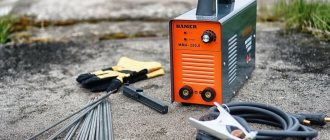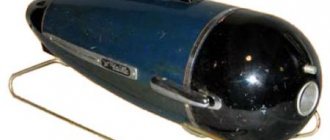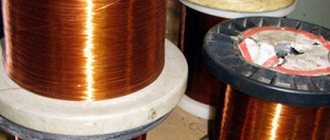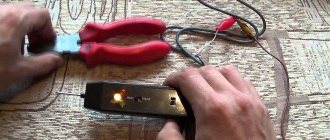Have you ever thought how great it would be to be able to see in the dark? This can be done using night vision goggles.
Unfortunately, a true night vision device, even of the simplest design, can cost hundreds of dollars for the optics alone. This is a very expensive technology. However, there are alternative methods of seeing in the dark: there are various night vision programs for gadgets, and children's toy stores sell toy spy binoculars. They use low-end cameras, infrared illumination and an inexpensive display. We will make this type of device with our own hands.
Our device will use parts that can be easily purchased in online stores.
So, let's begin. You don’t have to think that you will get a high-class device. It won't really be able to compete with real night vision devices.
Assembling a night vision device
First, let's make a disclaimer: the algorithm discussed below is not a detailed “step-by-step, mandatory” algorithm.
These are rather the basic principles that should be followed when developing your device. As a lens and night vision device at the same time, we can use almost any type of consumer webcam available on the market.
When choosing a webcam, you should be guided by the fact that the higher its resolution, the clearer the image will be in your virtual glasses.
However, this does not mean that low-resolution webcams “have no right to life” as a night vision device. They can be used as an external camera that will shoot video or take photographs in night mode. However, using it as a primary means of vision will be fraught with difficulties, since the image will be very unclear.
Camera modification
We will give an average disassembly characteristic - since the procedure may differ for different cameras, one essence remains the same:
- First, the lens is unscrewed;
- Remove the infrared filter by prying it off with a screwdriver. How to recognize it: it has a distinct red color.
- Screwing the lens back
The video below shows the camera modification process in detail. In addition, the difference between a camera with and without an IR filter is clearly shown:
Connecting the camera to a smartphone
In order for the smartphone to see the camera, you need to use an OTG cable.
Appearance of an OTG cable
What is USB OTG: Support for On-The-Go technology appeared in USB in 2006 and made it possible to connect two devices without an additional USB host. With a USB connection, one of the devices acts as a host and the other as a peripheral. Moreover, under different conditions, the same device can be either a host or a peripheral.
With USB OTG, devices now have dual purpose and the ability to define who they are. If we are talking about smartphones, then this is the ability to connect external devices without intermediary.
Modern smartphones (not all of them yet) may have this function built-in, then you can easily connect flash drives, cameras, keyboards, printers, and so on. In fact, you can connect any device that does not require installing additional drivers.
If your smartphone does not support OTG, you can use an adapter. On one side – Micro USB / USB-C, on the other – USB-A (regular port).
Making a backlight for a night vision device
As we wrote above, a night vision device of the type that we are assembling will require mandatory infrared illumination for its operation.
That is, it will be necessary to highlight the area in which the camera is looking. For illumination, we need an infrared flashlight. A fairly large number of these devices can be purchased on AliExpress.
The device indicated in the link above has a consumption of around 0.25 Amperes.
To power it you will need:
- Charge/discharge controller for 18650 batteries;
- Voltage converter (which will increase 5V - from the charge/discharge controller - to 12 V to power the IR flashlight)
- Lithium-ion battery of 18650 form factor. For example, high current
You need to connect the elements according to the diagram below:
Program for a smartphone
In order for a smartphone to “see” the camera, you need to download and install any program for cameras. For example, USB Camera (for Android).
Smartphone mounting device
To mount your smartphone in order to wear it on your head, you should take one of the many types of virtual reality helmets, choosing the size of your smartphone.
The next step is to attach in one way or another to the selected helmet - the above-mentioned backlight batteries, the backlight itself, as well as the camera (3D printing can be very helpful in this matter, to create a compact fastener that is maximally compatible with a specific helmet).
That's all! Your personal night vision device is ready!
The video below shows an example of assembling a similar device. However, it is recommended to use the charge/discharge controller discussed above (not the same as in the video) - since it combines in one compact case both the 18650 element fasteners and the means for its charge/discharge control.
Example of a similar device:
The scope of application of such devices is quite wide - from night photography in complete darkness to monitoring the sleep of a sleeping child (if the system is supplemented with any image analysis software).
What kind of night vision device will we assemble?
Based on all of the above, now that we know how a night vision device works and what typologies exist, we can think about building our own.
As the analysis of information shows, the most accessible way is to remove the infrared filter from an existing household video camera.
If we move in this direction, there are three most promising, in our opinion, ways to create this device:
- Removing the infrared filter from any of the available smartphones, that is, from its main video camera (not the front one);
- Connecting an external camera to the smartphone, from which the infrared filter is removed;
- Buying a smartphone that has the ability to record night video. Smartphones of this type already have a video camera with a remote infrared filter. However, we will not consider this method, since the purpose of our article is precisely to create our own device. However, if someone is interested in this method, we will provide a link to a number of similar devices.
Of the first two methods, the second method seems to be the most applicable, since disassembling modern smartphones is associated with significant difficulties, due to the fact that they have a fairly dense layout and are assembled using special tools. Among these complicating special means are the following:
- the use of special screws with shaped heads that require a special tool (which, as a rule, the DIYer does not have).
- many smartphones are assembled using heat bonding of components, which makes disassembling the case even more difficult
A meticulous reader will probably want to ask, why a smartphone? Why can't I take a video camera?
The fact is that since we are designing a system that will be intended for use as a person’s “night eyes,” we should provide for the possibility of wearing this system directly on the head, like ordinary glasses.
Due to the many attempts by various companies to somehow “saddle” virtual reality (especially with the advent of Google Cardboard virtual reality glasses), it makes sense to consider the creation of devices that are based on modern smartphones and are inserted into special mounting systems that fit on the head. In addition, the very use of a smartphone as a central device allows you to expand and modify the functionality of this night vision system within a fairly wide range and with sufficient flexibility.
How to illuminate a target with an infrared beam?
There are also two main schemes here. The first assumes that a laser or LED is used for illumination, which emits infrared light with a wavelength invisible to the normal eye. The laser generates a very narrow beam; in addition, this IR illuminator operates in short pulse mode, which makes the illumination noticeably less detectable.
Such schemes are quite compact, but illuminate the area only within a fairly narrow cone. The visibility of such a scheme is limited, so it will be more difficult to detect targets against the background of the landscape. Such devices are better suited for tracking targets that have already been detected.
A much wider field of view can be achieved by using an infrared spotlight to illuminate targets. In this device, the lamp is placed in a reflector cone, and the cone aperture is covered by a lens made of material that cuts off all waves except infrared radiation. This type of spotlight illuminates the surrounding area with a wide cone, creating a sufficient field of view. The range at which you can notice a target and distinguish it against the background of the landscape depends on the power of the lamp and can reach up to half a kilometer for the best factory samples.
What are night vision devices usually used for?
Modern night vision devices are available in several basic form factors.
The simplest is a night monocular - a telescope held in the operator's hand, usually of low magnification.
Night vision binoculars have two image intensifier tubes and display an enlarged stereoscopic image.
Night vision goggles are mounted on the head, have a wide field of view and do not magnify the image (or have variable magnification from 1x to a higher value, which allows them to be used as binoculars). Glasses can have two image intensifiers or be pseudo-binocular, when the image from one image intensifier is received by both eyepieces. A 1× monocular mounted on a headband can be used as a cheap alternative to glasses.
Night vision scopes are mounted on a weapon, typically magnify the image, and have a reticle. There are also night vision attachments for daytime optical sights. These devices must withstand the recoil of the weapon; not all sights can be used on high-power small arms.
An alternative option for aiming through night vision devices is to use an infrared laser target designator mounted on a weapon, the invisible beam of which is observed through night vision goggles.
Night vision devices are also installed on military equipment, where they are integrated into sighting systems.











